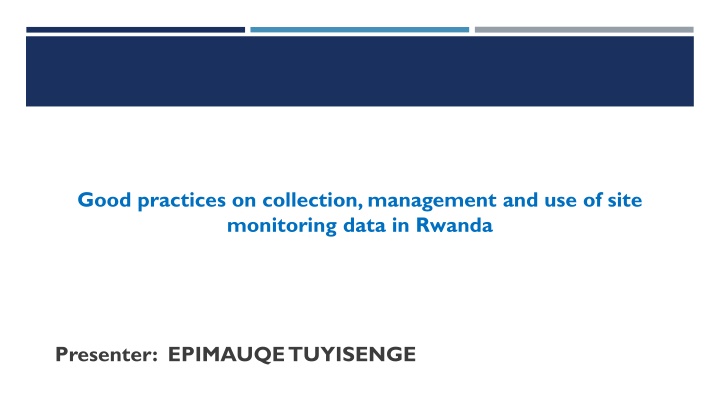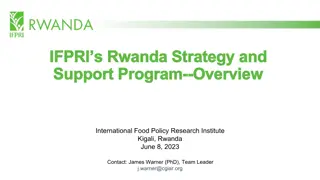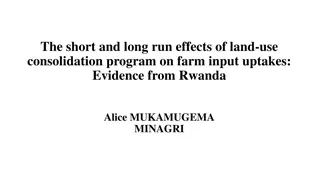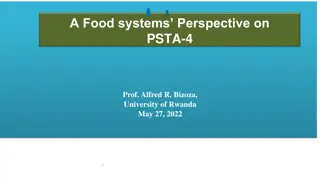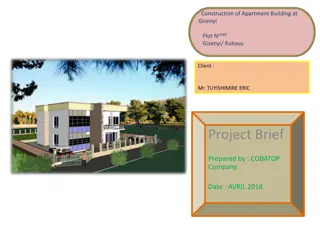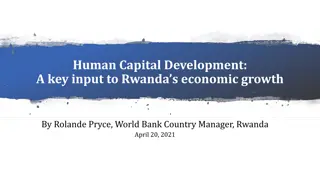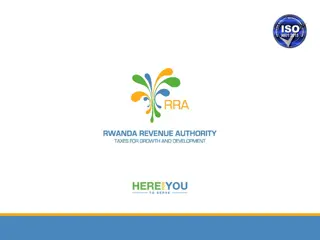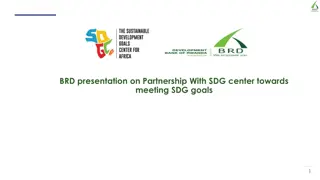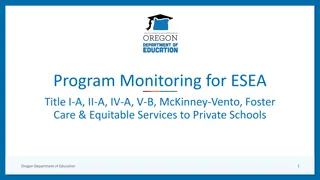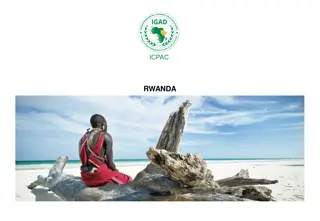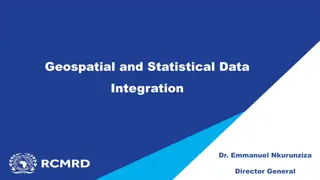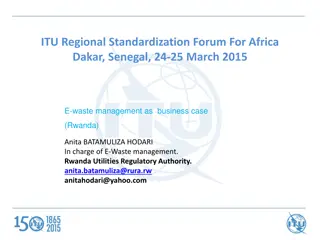Best Practices for Site Monitoring Data in Rwanda
Effective management of site monitoring data is crucial for informed decision-making. This presentation by Epimauqe Tuyisenge provides valuable insights and guidelines for collecting, managing, and utilizing data in Rwanda. Learn about key practices and strategies to enhance the quality and utility of monitoring data, contributing to evidence-based decision-making processes.
Download Presentation

Please find below an Image/Link to download the presentation.
The content on the website is provided AS IS for your information and personal use only. It may not be sold, licensed, or shared on other websites without obtaining consent from the author.If you encounter any issues during the download, it is possible that the publisher has removed the file from their server.
You are allowed to download the files provided on this website for personal or commercial use, subject to the condition that they are used lawfully. All files are the property of their respective owners.
The content on the website is provided AS IS for your information and personal use only. It may not be sold, licensed, or shared on other websites without obtaining consent from the author.
E N D
Presentation Transcript
Good practices on collection, management and use of site monitoring data in Rwanda Presenter: EPIMAUQE TUYISENGE
OUTLINE Data collection process Data use to identify gaps hindering accreditation Lessons learnt
SITE MONITORING DATA COLLECTION Data collection tools SPI-RT checklist for site audit Integrated CQI tool Electronic proficiency testing (ePT) data on PT Data collection process Who: National Reference Laboratory and site Q-corps Frequency: Site Audit: Annually; case by case basis Proficiency testing: Once every year CQI: Once every year; case by case basis
Used to collect aggregate data on site performance across seven sections that align with standard requirement specific for HIV rapid testing Electronic version, easy for use. Audit data uploaded on NRL server Pre-audit, Audit and post audit sessions needed Consists of five different levels (L0 to L5) to indicate status toward national certification SPI-RT CHECKLIST FOR SITE AUDIT Auditors complete a summary of audit findings form to evaluate testing points operations per SPI-RT checklist items listing issues/gaps observed and recommendations
INTEGRATED CQI TOOL Used to collect aggregate data on quality of testing of HIV/VL/ EID;TB/AFB/Xpert, Culture; CD4, HIV/Recency; Malaria and TB/LAM Integrated to minimize cost, avoid redundancy, time and promote synergy/coordination in QA Evaluates status of applicable quality essentials Electronic version (deployed) Requires team organization, prior planning and coordination
ELECTRONIC PROFICIENCY TESTING (EPT) DATA ON PT Online data tool to capture proficiency testing (PT) data on shipments, tester particulars and scores, and PT provider feedback to testers Allows PT providers to send electronic shipments of PT panels and allows testers to submit online responses after receiving and testing physical samples Requires user credentials for data security. Used by all HIV testers in Rwanda. Generates individual and site PT summary scores per shipment to indicate individual/Site performance to inform corrective action
PROFICIENCY TESTING DATA USE TO MONITOR PT PROGRAM COVERAGE AND TESTER PERFORMANCE PT Program Coverage of Testers Tester performance 6000 6000 100% 91% 90% 5000 85% 5000 80% 78% 72% 68% 70% 4000 4000 66% 65% 60% 3000 3000 86% 85% 50% 82% 81% 40% 76% 2000 45% 60% 41% 2000 39% 37% 20% 1000 30% 1000 25% 0 0% Kigali East South West North National 10% 0 Kigali East South West North National FY22 Testers FY23 Testers FY23 Pass FY22 %pass FY23 %pass FY22 FY23 %increase
LESSONS LEARNT Use of electronic tools facilitates data collection, analysis & archiving Insufficient use of laboratory data use for program planning Limited skills in data analysis among laboratorians
ACKNOWLEDGEMENTS US Centers for Disease Control and Prevention (CDC) Africa Field Epidemiology Network (AFENET) Rwanda Biomedical Center/ National Reference Laboratory (NRL) Rwanda Ministry of Health, ICAP and Ngarama DH PEPFAR
